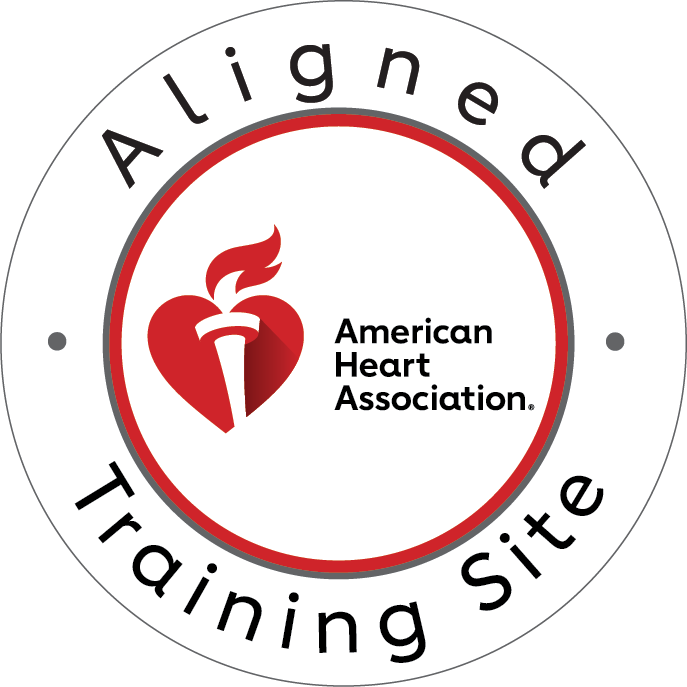In the event of a cardiac emergency, every second counts. Prompt and effective cardiopulmonary resuscitation (CPR) can mean the difference between life and death for a victim of cardiac arrest. As a healthcare professional, possessing the knowledge and skills to perform high-quality CPR is not just a professional responsibility but a moral obligation.
Cardiac arrest is a life-threatening condition that occurs when the heart suddenly stops pumping blood effectively, depriving the brain and other vital organs of oxygen. Without immediate intervention, the chances of survival decrease rapidly with each passing minute. This is where CPR comes into play, serving as a critical lifeline until advanced medical care can be provided.
At CPR Louisville, an authorized American Heart Association (AHA) training site, we understand the gravity of this situation and the importance of equipping healthcare professionals with the necessary skills to respond effectively. Our comprehensive CPR and related courses, including BLS for Healthcare Providers, ACLS, PALS, and First Aid, are designed to provide hands-on, stress-free training that instills confidence and competence in performing CPR correctly.
Performing CPR the right way involves a series of carefully coordinated steps that ensure optimal blood flow and oxygen delivery to the brain and other vital organs. From correctly assessing the situation and positioning the victim to delivering effective chest compressions and rescue breaths, each step plays a crucial role in increasing the chances of a successful resuscitation.
Step 1: Assessing the Situation
Before initiating CPR, it is crucial to assess the situation and ensure that it is safe for both the victim and the rescuer. Approach the victim and check for responsiveness by tapping their shoulders and asking loudly, “Are you okay?” If the person is unresponsive, activate the emergency response system by calling 911 or the designated emergency number in your area.
While waiting for emergency medical services (EMS) to arrive, quickly scan the area for an automated external defibrillator (AED). If an AED is available, retrieve it and bring it to the victim’s side. AEDs are designed to be user-friendly and provide audible prompts to guide you through the defibrillation process if necessary.
It is essential to remember that time is of the essence in a cardiac emergency. Every minute without CPR and defibrillation can significantly decrease the chances of survival. Therefore, it is crucial to act swiftly and efficiently while following the appropriate steps.
Step 2: Positioning the Victim
Once you have assessed the situation and called for emergency assistance, position the victim properly to perform effective CPR. Lay the person on their back on a firm, flat surface, such as the floor or a stable surface. This position ensures that chest compressions can be delivered effectively and that the airway remains open for rescue breaths.
If the victim is on a bed or a surface that is too soft, carefully roll or slide them onto a firm surface, such as the floor. Avoid unnecessary movement or twisting that could potentially cause further injury.
Ensure that the victim’s head is in a neutral position, neither tilted too far forward nor too far back. This alignment helps maintain an open airway, which is essential for effective rescue breaths.
With the victim properly positioned, you are now ready to initiate the critical steps of chest compressions and rescue breaths.
Step 3: Chest Compressions
Chest compressions are the cornerstone of effective CPR, as they help circulate oxygenated blood to the brain and other vital organs. Proper technique is crucial to ensure adequate depth and rate of compressions, maximizing the chances of successful resuscitation.
Locate the correct hand position on the victim’s chest by placing the heel of one hand in the center of the chest, between the nipples. Place your other hand on top of the first, interlocking your fingers to keep your hands in position.
Maintain proper body mechanics by positioning yourself directly above the victim’s chest, with your shoulders over your hands and your arms straight. This positioning allows you to leverage your body weight for effective compressions.
According to the latest American Heart Association guidelines, chest compressions should be delivered at a rate of 100 to 120 compressions per minute, with a depth of at least 2 inches (5 centimeters) for an adult victim. Compress the chest firmly, allowing for complete recoil between compressions to allow the chest to return to its normal position.
Minimize interruptions in chest compressions, as even brief pauses can significantly reduce the effectiveness of CPR. If you become fatigued, switch roles with another rescuer to ensure consistent, high-quality compressions.
Remember, effective chest compressions are vital for maintaining blood flow and oxygenation to the brain and other vital organs during cardiac arrest. By following the proper technique and guidelines, you can increase the chances of a successful resuscitation outcome.
Step 4: Rescue Breaths
In addition to chest compressions, rescue breaths are an essential component of CPR, providing much-needed oxygen to the victim’s lungs and bloodstream. Proper technique for delivering rescue breaths is crucial to ensure effective ventilation.
Begin by opening the victim’s airway using the head-tilt, chin-lift maneuver. Gently tilt the head back by lifting the chin with one hand while using the other hand to push down on the forehead. This action helps align the tongue and allows for an open airway.
Once the airway is open, pinch the victim’s nose closed with your thumb and forefinger. Take a normal breath and place your mouth over the victim’s mouth, creating a tight seal. For an adult victim, deliver two rescue breaths, each lasting about one second. Watch for the chest to rise with each breath, indicating that air is entering the lungs.
If you are uncomfortable with or unable to perform mouth-to-mouth ventilation, you can provide rescue breaths using a barrier device, such as a face shield or pocket mask. These devices help protect both the victim and the rescuer from potential exposure to bodily fluids.
When delivering rescue breaths, be mindful of the victim’s chest rising and falling. If the chest does not rise, reposition the head and try again. Obstruction in the airway or improper head positioning can prevent effective ventilation.
It is important to note that rescue breaths should be provided in conjunction with chest compressions. The ratio of compressions to breaths for adult victims is 30 compressions followed by two rescue breaths, according to the latest AHA guidelines.
Step 5: Alternating Compressions and Breaths
After delivering the initial set of compressions and rescue breaths, continue the cycle of 30 compressions followed by two rescue breaths. This continuous cycle of compressions and breaths is essential for maintaining oxygenation and blood flow to the brain and vital organs.
When alternating between compressions and breaths, it is crucial to minimize interruptions and transitions. Smooth, coordinated transitions can help maintain the effectiveness of CPR and increase the chances of a successful resuscitation.
If you are performing CPR with another rescuer, it is recommended to switch roles every two minutes. This rotation helps prevent fatigue and ensures consistent, high-quality chest compressions throughout the resuscitation effort.
Remember, effective CPR involves a seamless coordination of chest compressions and rescue breaths. By mastering the technique of alternating these two components, you can provide the best possible care for the victim until advanced medical assistance arrives.
Step 6: Using an AED (if available)
An automated external defibrillator (AED) is a portable device that can analyze the heart’s rhythm and deliver an electric shock to restore a normal rhythm in the event of a life-threatening arrhythmia, such as ventricular fibrillation or pulseless ventricular tachycardia.
If an AED is available, it should be used in conjunction with CPR to increase the chances of survival for the victim. AEDs are designed to be user-friendly and provide audible prompts to guide you through the process.
Once the AED is retrieved, turn it on and follow the voice prompts. It will instruct you to expose the victim’s bare chest and attach the adhesive electrode pads to the appropriate locations, typically on the upper right chest and lower left side of the chest.
After the pads are securely attached, the AED will analyze the victim’s heart rhythm. If a shockable rhythm is detected, the device will prompt you to deliver a shock by pressing the “shock” button.
It is crucial to ensure that no one is touching the victim during the analysis and shock delivery process to prevent accidental exposure to the electric current.
After delivering the shock, immediately resume CPR, starting with chest compressions. Continue the cycle of CPR and follow the AED’s prompts for further analysis and shock delivery if needed.
The use of an AED, in combination with high-quality CPR, can significantly improve the chances of survival for victims of sudden cardiac arrest.
Step 7: Continuing CPR
Continue administering CPR until one of the following occurs:
- Emergency medical services (EMS) arrive and take over
- The victim shows signs of life, such as breathing or movement
- You become too exhausted to continue performing CPR effectively
- The scene becomes unsafe
If working with a team of rescuers, it is recommended to switch roles every two minutes to prevent fatigue and maintain the quality of chest compressions and rescue breaths.
While performing CPR, monitor the victim’s condition and be prepared to adjust your technique if necessary. For example, if the victim starts breathing on their own, discontinue rescue breaths but continue chest compressions until EMS arrives.
Remember, CPR is a physically demanding task, and it is essential to work as a team and switch roles regularly to ensure consistent and effective resuscitation efforts.
Conclusion
Performing high-quality CPR is a crucial skill for healthcare professionals, as it can mean the difference between life and death in emergencies. By following the step-by-step guide outlined in this article and mastering the proper techniques for chest compressions and rescue breaths, you can increase the chances of a successful resuscitation outcome.
Regular training and certification renewal are essential to maintain your CPR skills and stay up-to-date with the latest guidelines and best practices recommended by the American Heart Association (AHA). At CPR Louisville, an authorized AHA training site, we offer comprehensive CPR and related courses, including BLS for Healthcare Providers, ACLS, PALS, and First Aid, in a stress-free and hands-on environment.
Our experienced instructors are dedicated to providing high-quality training that equips healthcare professionals with the knowledge and confidence to respond effectively in emergencies. By enrolling in our courses, you can gain valuable hands-on experience, learn from real-life scenarios, and receive personalized feedback to improve your CPR technique.
Remember, performing CPR correctly is not just a professional responsibility but also a moral obligation to help save lives. By staying prepared and committed to continuous learning, you can make a profound difference in emergencies and potentially save precious lives.
Don’t hesitate to invest in your CPR skills and knowledge. Enroll in CPR certification in Louisville today and gain the confidence to respond swiftly and effectively when every second counts.




